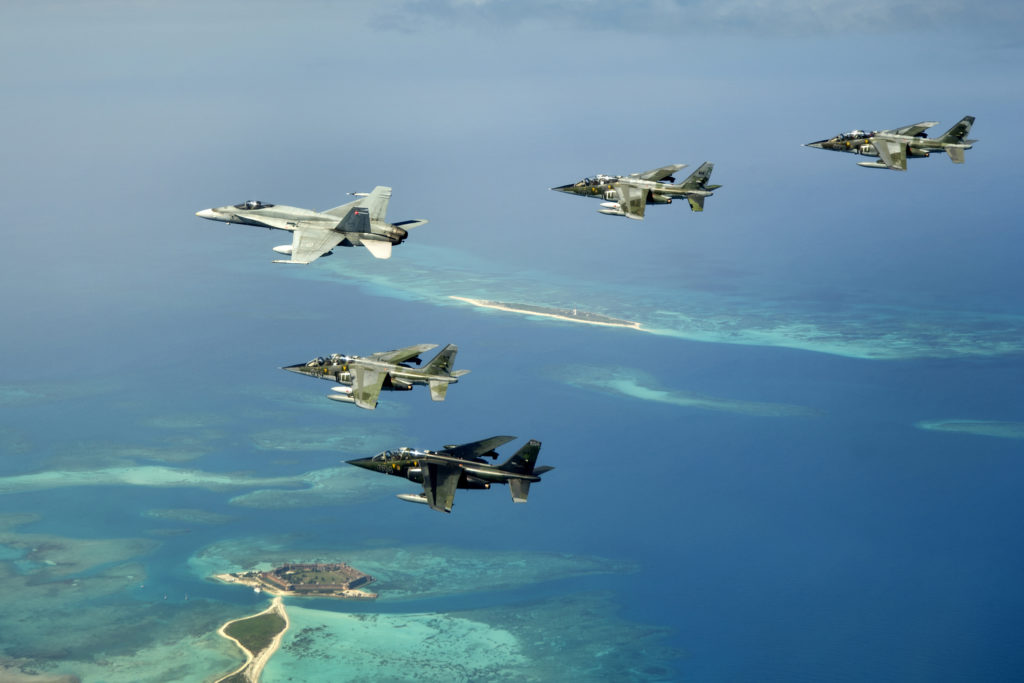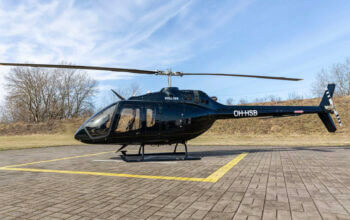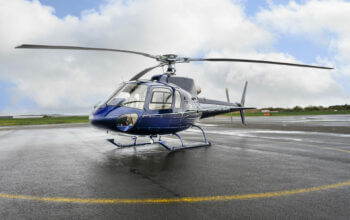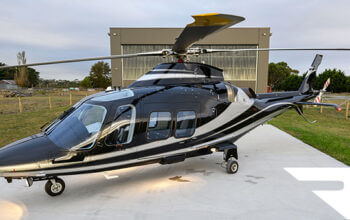Estimated reading time 6 minutes, 7 seconds.
As the incumbent on the Contracted Airborne Training Services (CATS) program, Discovery Air Defence (DA Defence) had every reason to be confident.
Still, there were visible signs of relief in its Montreal office on Oct. 30 when the federal government delivered a 10-year, $480-million contract with options that could extend the service to 2031 and the value to as much as $1.4 billion.

“It was a really proud, happy moment,” said president Paul Bouchard. “There was relief in the sense that we originated the [CATS] program . . . and it’s what we’ve built the whole business around. It is the largest and longest program of its kind in the world, and it creates a lot of job security and [financial] certainty . . . [and] allows us to advance the business plan of securing the company’s future in Canada and [to] continue to grow the company internationally.”
Corporate anxiety wasn’t helped by repeated delays in the evaluation process. The request for proposals (RFP) closed in February 2016, and a winner was expected by the end of year. Media reports, however, suggested the government lacked enough qualified staff to assess the bids, which pushed back the award until late October 2017.
The program will provide the Canadian Armed Forces (CAF) with adversarial air, also known as aggressor or red air, which simulates hostile threats for fighter pilots, naval crews and land forces. The project includes training for joint terminal attack controllers, electro-optical and infrared-guided weapons system operators, as well as electronic warfare training for aircrews, land forces, aerospace weapons controllers, and navy frigates.
The realistic combat readiness training has been beneficial to the Canadian Army and Royal Canadian Navy; it’s been particularly important to the Royal Canadian Air Force, preserving flight hours for the CF-188 Hornet, which cost approximately $30,000 per hour.
Discovery Air Defence (DA Defence) edged out CAE Canada in what Carla Qualtrough, recently appointed minister of Public Services and Procurement, called “an open, transparent and competitive process.”
CAE had partnered in a joint venture with Draken International of Lakeland, Fla., operator of one of the largest combat aggressor air fleets. An official with CAE said the company was disappointed with the result and had “requested a debrief to learn more about the reasons for the decision.”
Canada has been a pioneer among NATO allies in the use of contracted airborne services. Since the early 2000s, DA Defence has delivered aggressor air on an interim basis to national and international training exercises through a series of government standing offers, employing a combination of fighter jets and business jets stationed at four bases–Esquimalt, Cold Lake, Bagotville and Halifax.
The success of the Canadian program helped the company secure a similar training support contract with the German Armed Forces in 2014 and, more recently, a two-year trial with the Australian Defence Force. It has also helped position DA Defence to bid on large contracts with the U.S. Air Force (USAF) and U.S. Navy (USN), and–with partners Leonardo and Inzpire–on the U.K.’s Air Support to Defence Operational Training (ASDOT) program.
In interviews with Skies, company executives acknowledged that a loss of the CATS contract could have meant the end of the company as a Canadian entity.
“It would have made it tough in Canada, just because [CATS] is 100 per cent of our business,” said Bouchard, a former CF-188 fighter pilot who, like many of his employees, has decades of experience in the CAF. “The company would have continued, but obviously the Canadian piece is a big piece–that is where we started from, so it would have been a big blow.”
“This is our bread and butter. This is the foundation of DA Defence,” said Didier Toussaint, group president and operations manager. “Without [CATS], it would have been very difficult to continue to implement our strategic path. Winning at home is essential. It’s a long time coming, but we really feel this is one of the key steps we needed to put in place.”
More than anything, the victory is validation of DA Defence’s capabilities. The adversarial air training services industry is relatively small, but the market is expected to skyrocket in the coming decades, from approximately 20,000 flight hours to over 100,000, as NATO allies seek training for new fleets of fifth and advanced fourth generation jets. The USAF program alone could exceed the combined current capacity of every player in the sector, while the advanced USN requirements could push the technological envelope.
“We think [CATS] is going to be a launching platform for us internationally,” said Bouchard. “We’re already active, but this is going to allow us to expand with confidence.”
The program has become a benchmark for many countries considering embedded aggressor air, he noted, and allies such as the U.K. and U.S. have become familiar with the aircrews, technicians and services of DA Defence through participation in Canadian exercises such as Maple Resolve and Maple Flag.
“[This] gives us the opportunity to compete in the rest of the world,” said Toussaint.









So this is a private company ?? Do they employ ex military pilots ?? I believe I saw one of the Blue and gray coloured jets flying out of Villaneuve just West of St.Albert ,Alberta a couple years back ..very interesting read.
Most of their aircrews are local national hires, Jas….in other words, former fighter pilots of whichever country they are providing the service to. Didier Toussaint stressed that they are very sensitive to pilot shortages in many air forces and don’t actively recruit. They wait until people are ready to retire before approaching.
Well in fact, most of their crews are high experienced ex-mil guys from both side of the borders and this is certainly understandable.